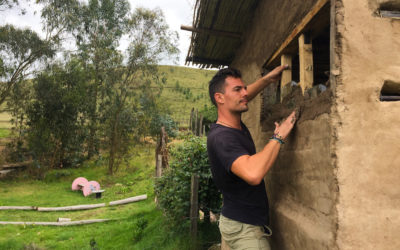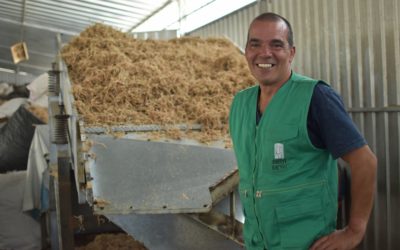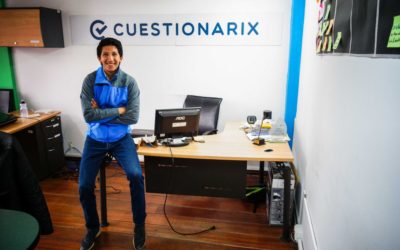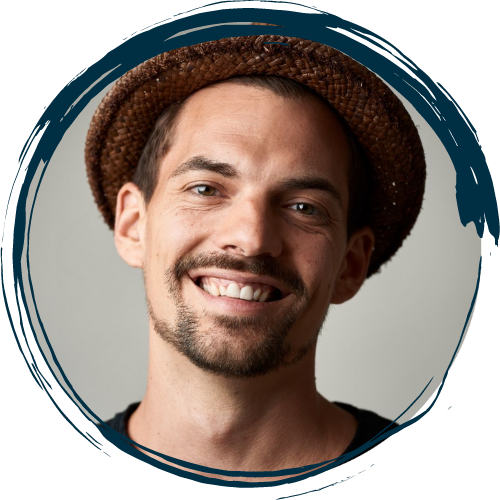Vision
„I want to make a movie where I can touch humanity and paint a portrait of both sides to show a part of the Colombian conflict people wouldn’t otherwise see. If I can open their eyes a bit wider, I’d feel that I have contributed my passion to promoting peace in Colombia.“
On first steps
„Believing in yourself can be scary. Believing in your project can be scary. Taking these first steps to turn that into reality can be terrifying. But once you cross the threshold of doubt in your mind the momentum keeps carrying you until that idea becomes a reality.“
About
independent film maker & FARC-documentary producer
A picturesque sunset in the green mountains of Minca in the north of Colombia made the scene in „Casa Loma Hostel“. Noah and his girlfriend Laura were taking pictures of each other when I offered to take one of them. Soon Noah told me about his project he has been involved in for nine months: „Strangers to Peace“, a documentary about the reintegration of ex-FARC-combatants back into Colombia’s society – one of the greatest challenges the country faces nowadays. The 29-year-old instantly had my attention and when we finished our Cuba Libres, we agreed to catch up in Bogotá soon again.
The streets are noticeably less busy, the houses apparently more battered, the people perceptibly poorer than in other parts of Bogotá. Dogs sniff street trash, graffitis adorn walls, through the open car window I smell exhaust. The taxi driver that brings me to the neighborhood of Las Cruzes mentions without being asked what I’ve been told before: „It’s a dangerous area here. Some of my colleagues don’t even drive here.“ I close the window.
We are following the van of Noah’s film crew up the hill.
An armed private security guard rides his motorcycle right behind us. Four policemen are protecting us and the camera gear worth some thousands of dollars. It’s Ricardo’s story that Noah and his team feature today. Ricardo is 26 years old, wears black horn-rimmed glasses and a dark green college jacket – he was a member of the infamous guerrillas of the FARC, the Revolutionary Armed Forces of Colombia.
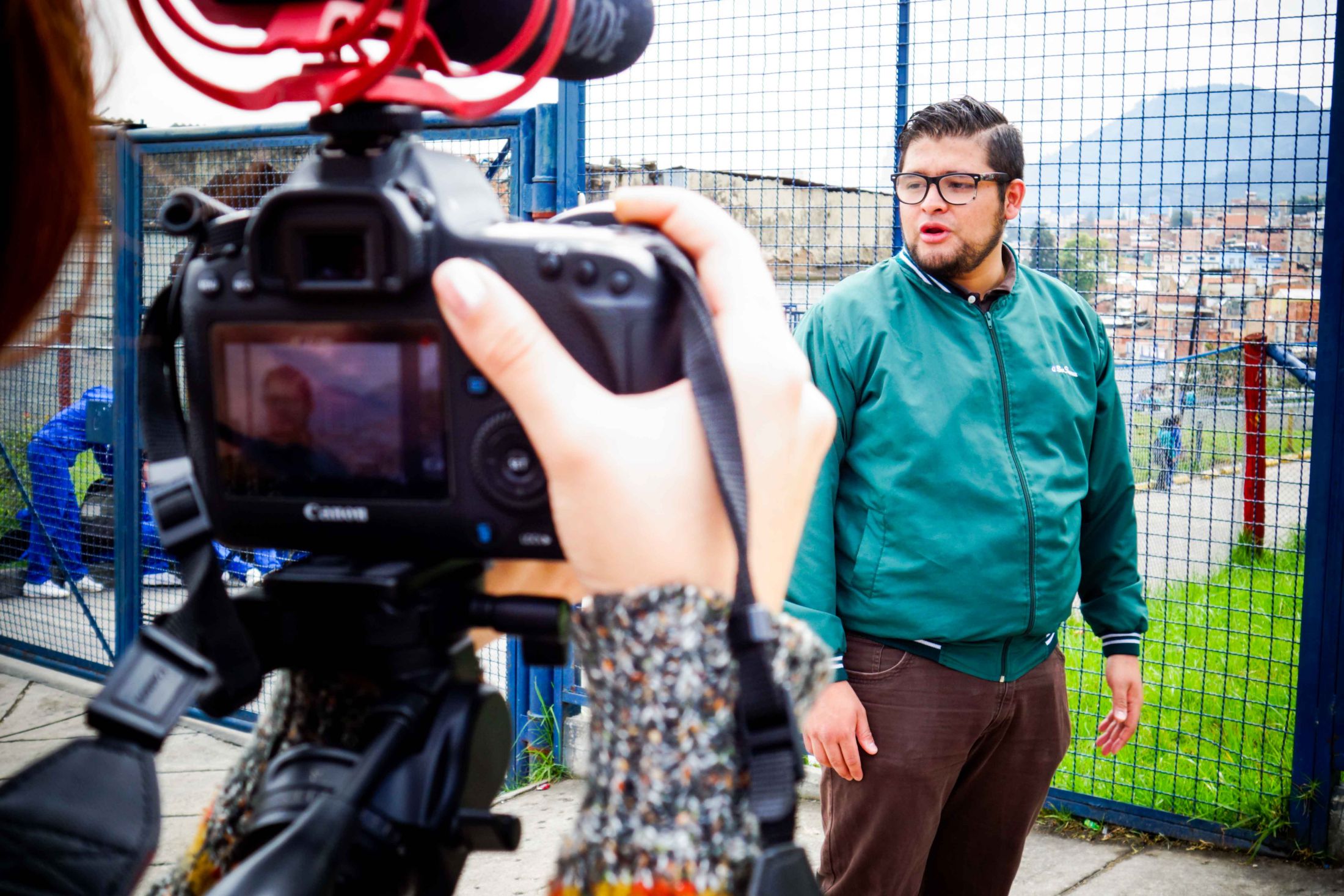
Ricardo, ex-member of the FARC-guerillas, in front of his school.
School kids in blue uniforms throw balls to each other
Their asphalted playground is located behind a high lattice fence and an armed security guard stands observant in front of it. Ricardo watches them playing, his gaze wanders through the fence holes, lost in thought. It’s been twelve years since he threw balls here too. Before one of his teachers recognized how smart he is. He made Ricardo read communistic books, planted the seed of left-wing-politics in his mind and eventually recruited him to Colombia’s most famous guerrilla group when Ricardo was fourteen years old.
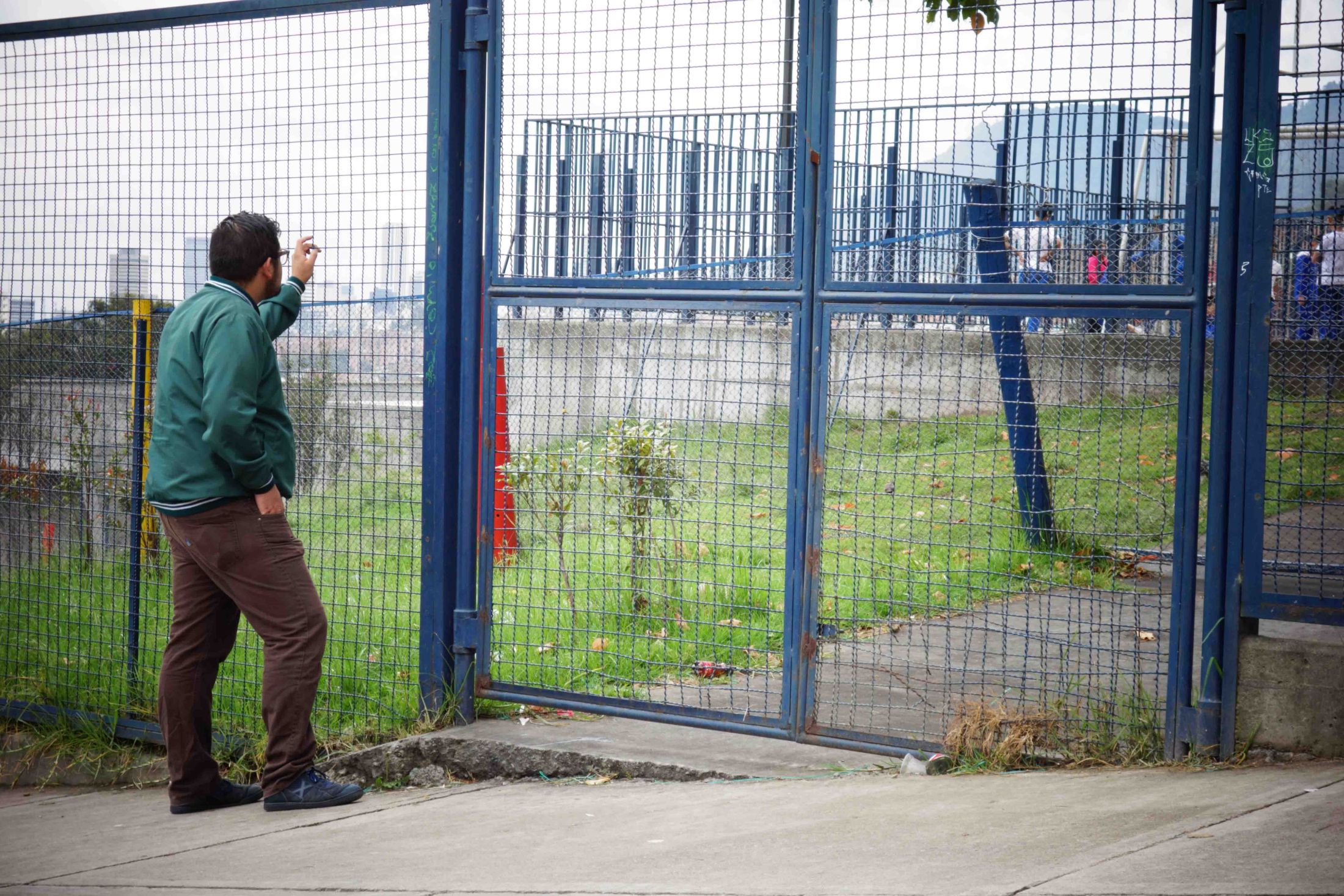
Ricardo was recruited into the FARC by one of his teachers.
“Today’s film shoot is important for Ricardo’s story”,
explains Noah, „he shows us his school and tells us about the circumstances that made him join the FARC. We’ve been working for 1,5 months to make this day happen.“ Ricardo tells: „It’s a complicated neighborhood here with a lot of drug-traffickers, gang-activity and violence.“ I ask policeman Juan Manuel who stands in front of a garbage pile across the street as he is watching the scene: „The neighborhood has improved recently, but ten years ago it was the most dangerous area of Bogotá. We, the police, can’t solve the problems of the people here, especially not the socio-economic ones. We can arrest a bandit or a drug trafficker as we catch him ihn. But the people here are hungry and poor and their problems remain.“
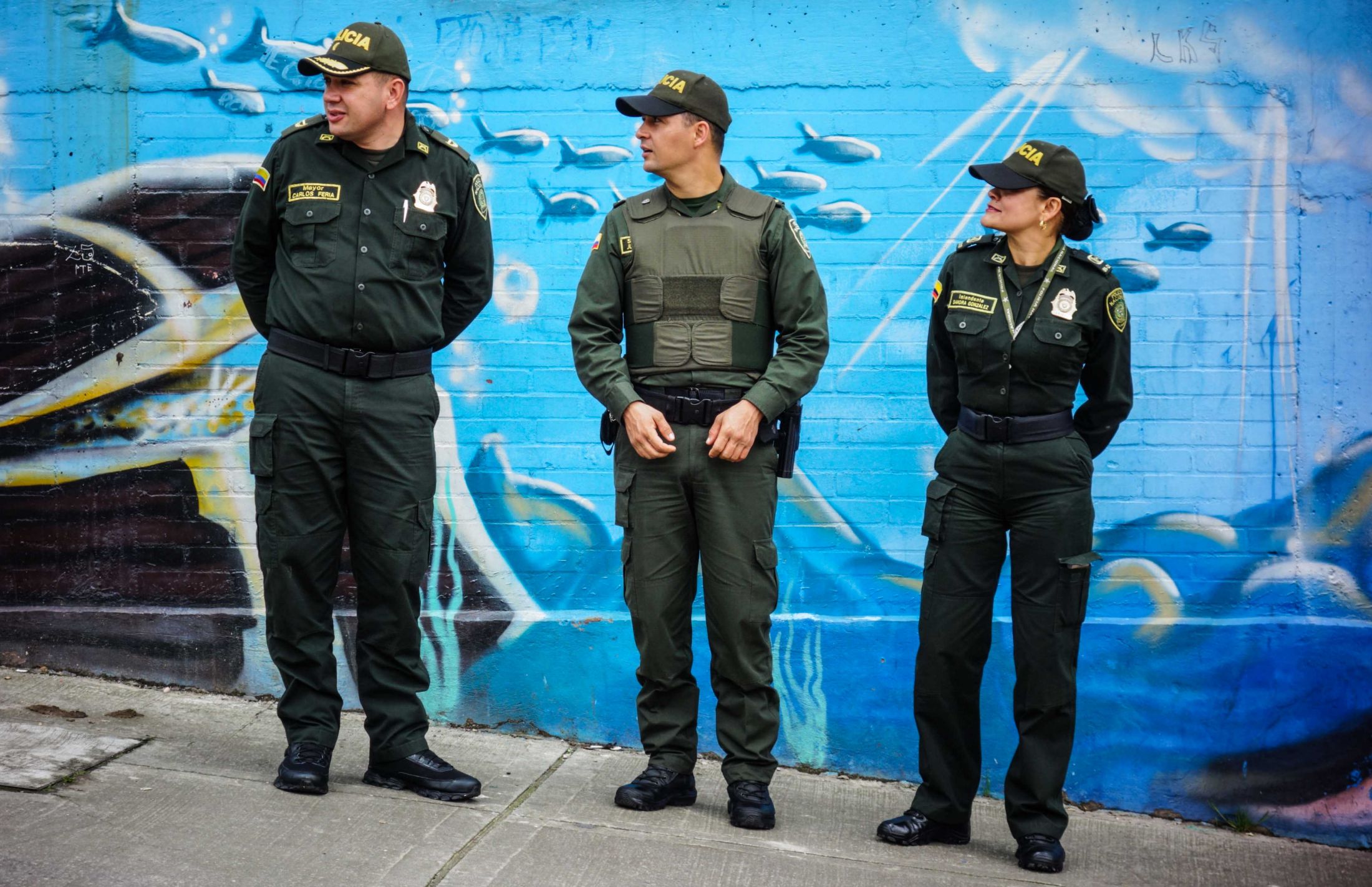
Ricardo lives in a different neighborhood today
„In a better one“, as he states. He left the FARC five years ago. „I was interested in the political views and their ideal of the equality of people that communism proposes“, Ricardo continues, „but I couldn’t stand behind the methods of the FARC anymore, the drugs to finance their forces and all that violence.“ On the long road of reintegration that so many ex-combatants of the FARC start to walk these days, Ricardo has come a long way already. He works for the governmental Colombian Agency of Reintegration (ARC) and hence helps others now to get going.
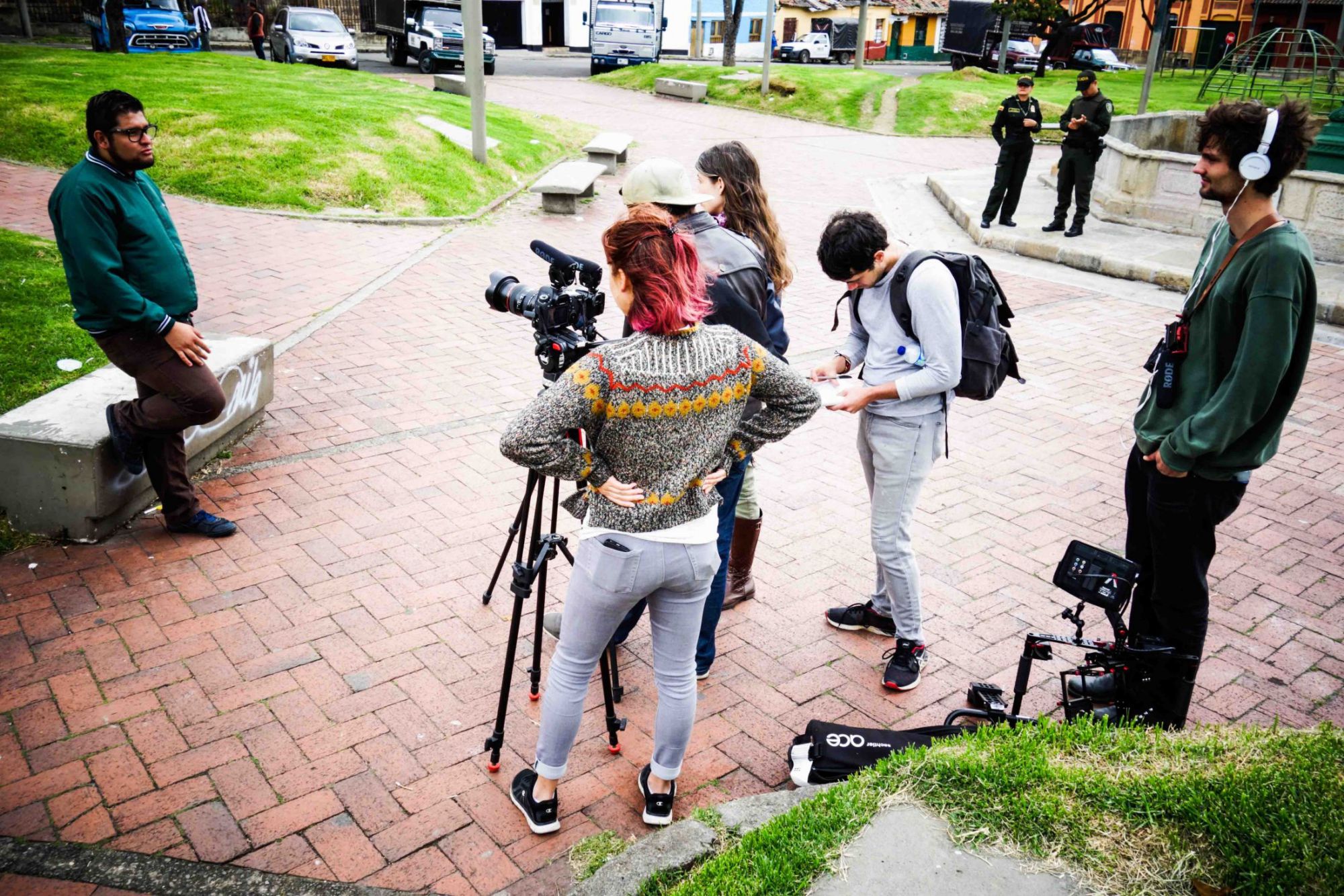
Ricardo’s story is one of four Noah Debonis tracks throughout his documentary
Noah was on a plane ride together with his friend, Colleen O’Brien, who is now his producer, when they came up with the idea for “Strangers to Peace”: „As an outsider to the Colombian peace process, I felt that its reintegration aspect is something that I can really relate to on a human level. It’s about acceptance, it’s about human beings forgiving each other. But that story is very taboo here and I felt it needs to be told to Colombians as well as to the outside world.“ Since that idea became reality nine months ago Noah visited concentration camps of the FARC, met people from both sides, combatants and victims, politicians and displaced people. He sets up shoots and struggles with them being cancelled again.
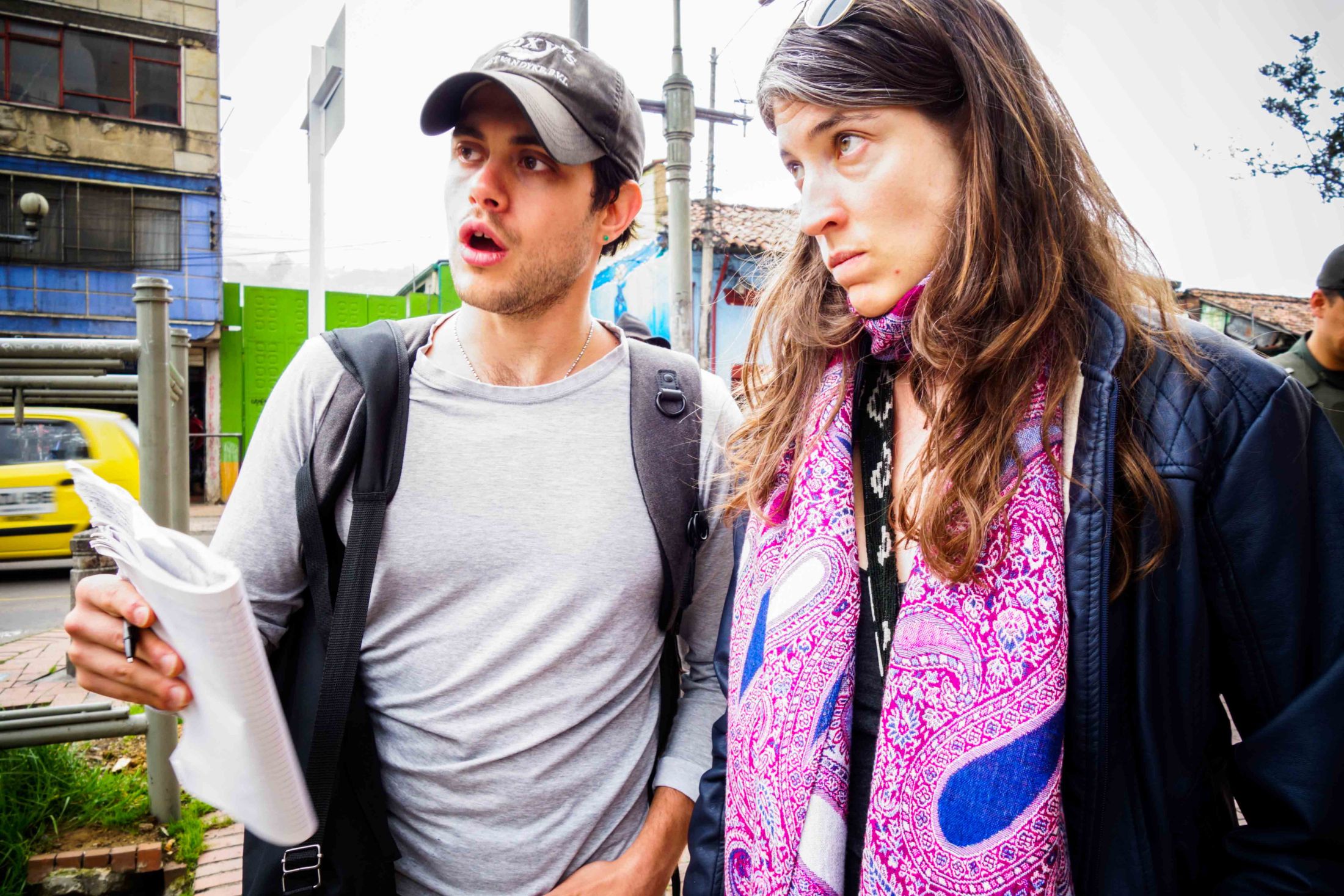
“As goes reintegration, as goes the peace process.”
Luis Augusto Aponte works for the Colombian Agency of Reintegration (ACR) and joins today’s film shooting. He confirms the importance that Noah’s work has for the peace process: „This documentary is very relevant, for it will help make the reintegration process visible nationally and internationally. These ex-FARC-people deserve a second chance and should be treated as human beings like us. We are working hard to eliminate their stigmatization.“
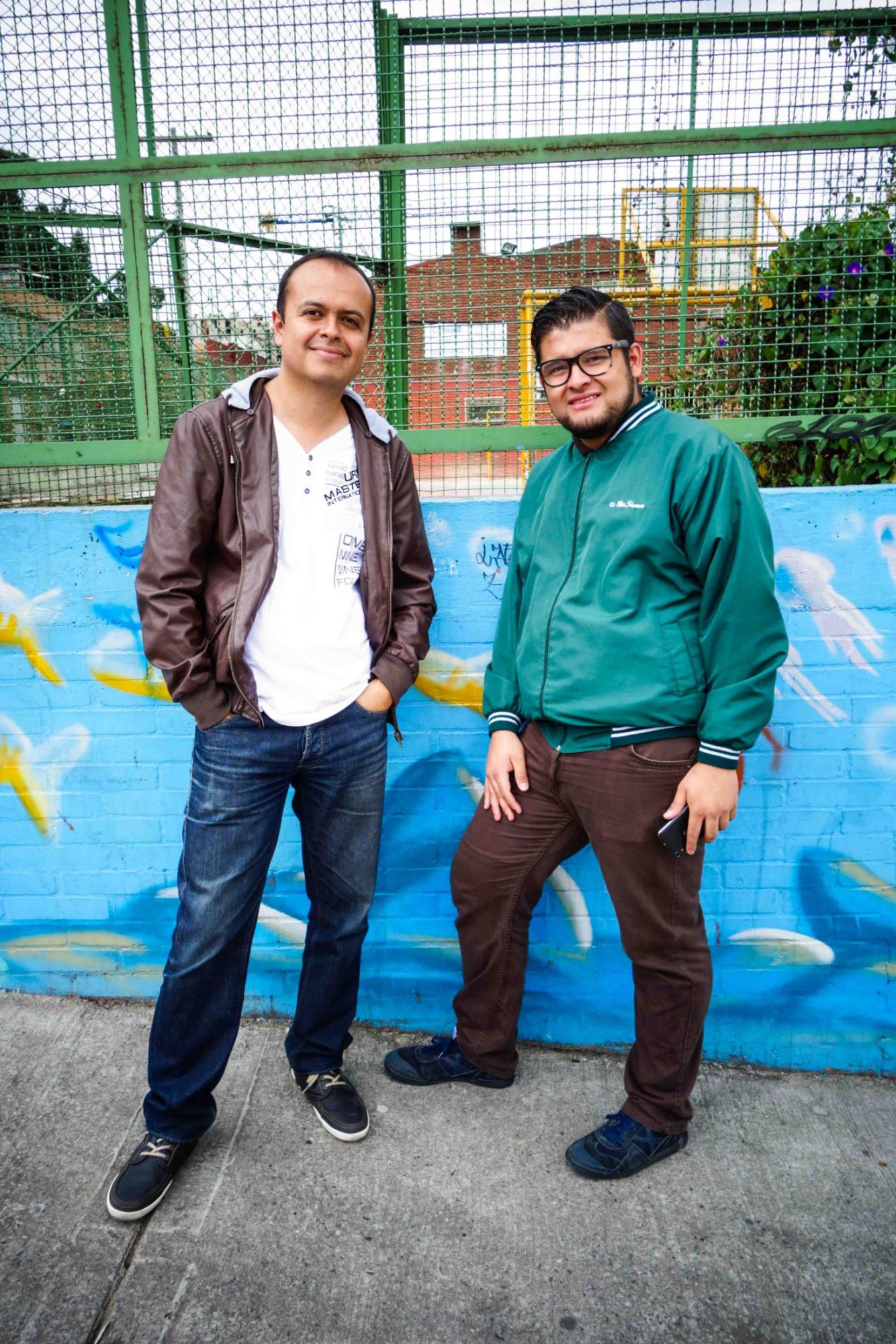
The room of Noah’s girlfriend has turned into the production headquarters
We are sitting in a room of ten square meters, with two desks, a bed, an iMac and a wardrobe. The walls are wallpapered with dozens of colorful post–its, whiteboards and blackboards with storylines, drafts, schedules and ideas. Noah’s girlfriend, Laura, resides in her mother’s house in Bogotá. She has turned her room into the production headquarters of „Strangers to Peace“. „This is not a professional film project, this is independent film making“, Noah comes up with, „nobody earns money with it. We are doing this because we believe in the project and in the story. Laura is field producer, camera women and organizer at the same time. She is a powerhouse. Then there’s also Colleen, my producer, and Rajiv, my cameraman and an incredible filmmaker. It’s a small group of dedicated people. Without them the project wouldn’t exist.“
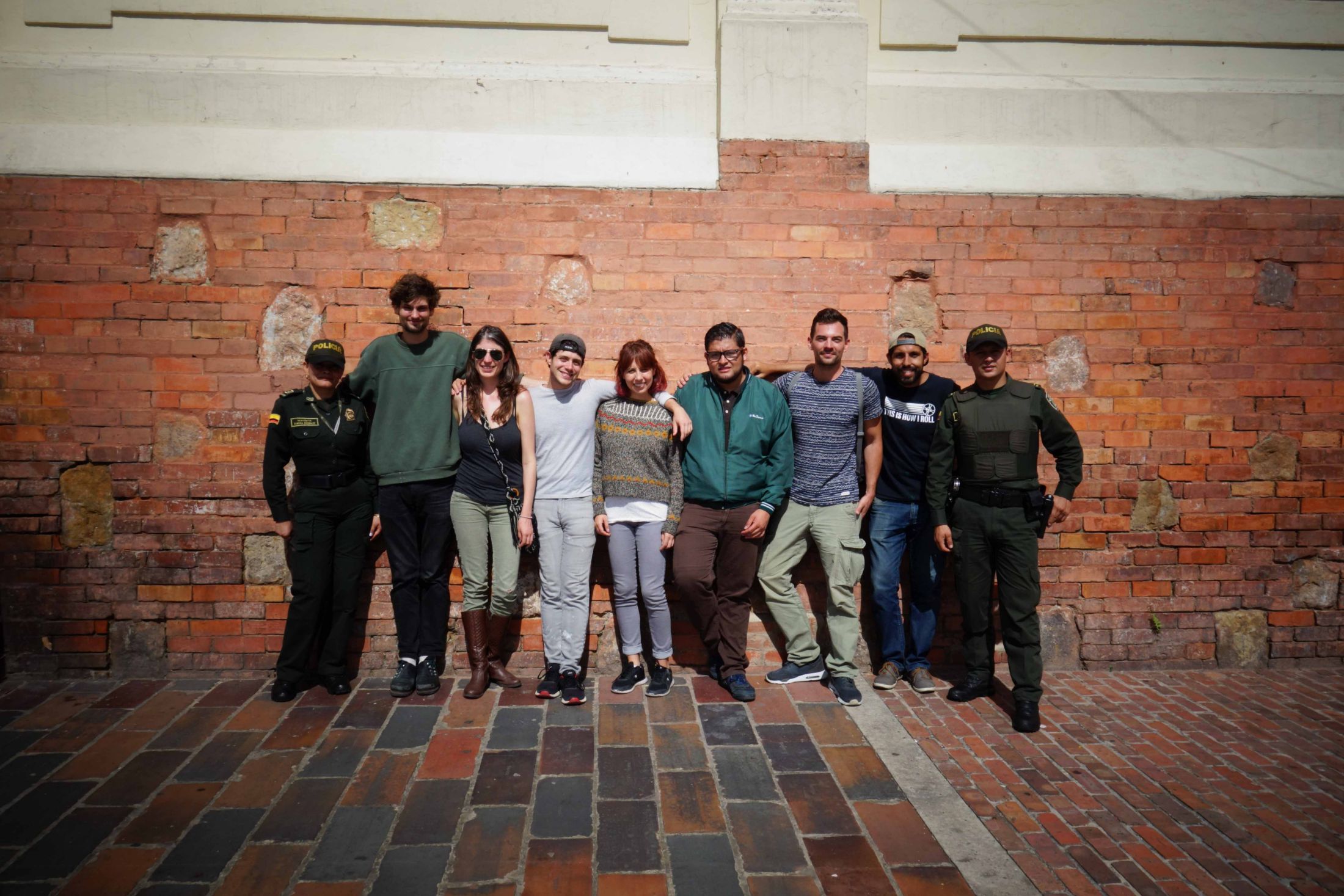
This is not an easy story to tell
Gaining access and trust to the people as well as dealing with constant setbacks and bureaucracies is what Noah describes to be his biggest challenges. Believing in the story and the bigger picture is what empowers his passion to grow bigger and bigger – this is what keeps him going: „I’m not a pro-FARC or anti-FARC, it’s not my place to take a stand on the morality of this situation as an outsider. But I think it’s important to understand people as human beings. To start the process of reconciliation you need to see a person as a human, rather than an organization, a monster or any of these things that separate people from humanity. My hope is that this film can show the humanity of reintegrated ex-combatants from the FARC and opens the eyes of some Colombians too.“
Noah worked for the television in Los Angeles as a filmmaker. „I have turned down a lot of work in the states to make this happen, which has been a financial burden“, he tells. A campaign on „kickstarter“ provided „Strangers To Peace“ with some money necessary to get started. The project is still far away from being completely financed though. They need money for expenses, such as accommodation, transport and equipment. „We have some incredible stories to tell and I hope that when people see our footage they will donate more money to bring us to the finishing line.“
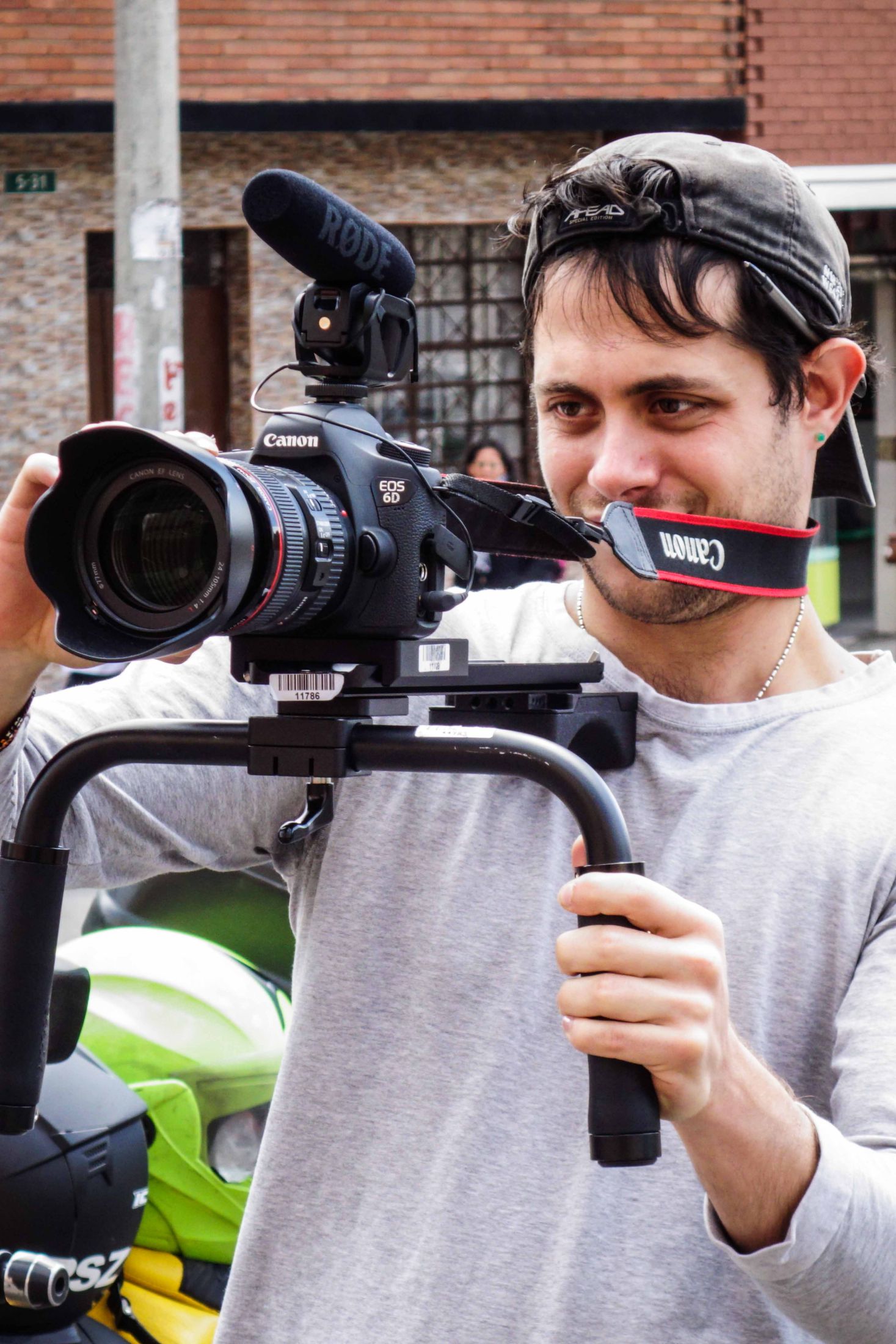
“Choose a job you love and you will never have to work a day in your life.”
This quote of Confucius describes well what Noah’s dedication to his project feels like. He, by himself, has a superior explanation:
„This has been the most rewarding year in my life. I would not trade this for the world. I have taken a chance on myself and on a project I’m passionate about. I have taken a chance to do something not because of money, but because I truly believe in it.“
Ricardo believes in change
„He is a good example for how people and their minds can change over time“, says Noah’s producer Colleen O’Brien. Besides his job at the ARC, Ricardo is studying geography and wants to become a teacher. To do a better job than his own teacher – twelve years ago in the high school of Las Cruzes.

Find Noah Debonis and “Strangers to Peace” on facebook.
